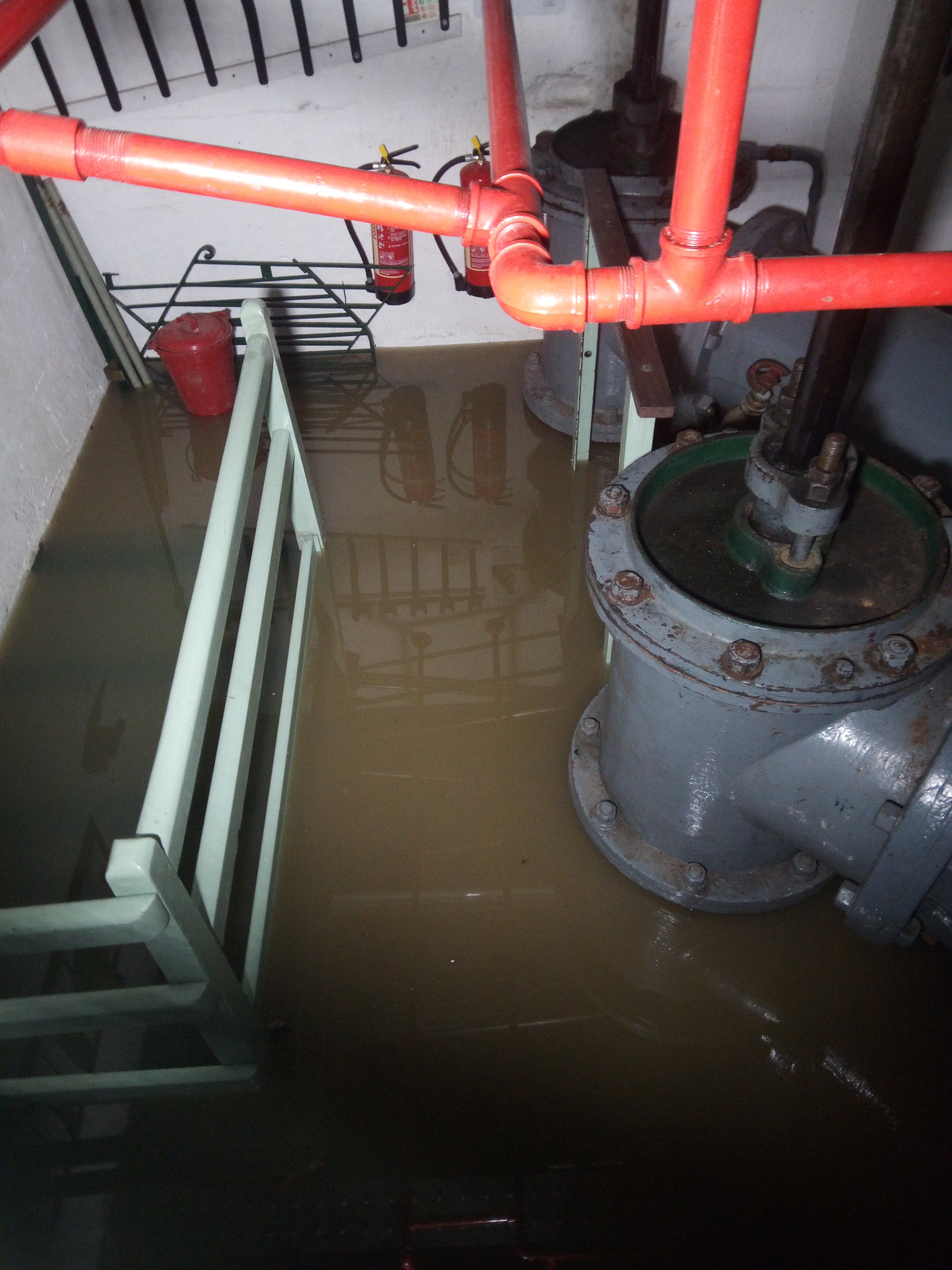Story
Claverton Pumping Station is a unique surviving example of a Georgian beam engine. The Grade I listed building houses one of the few surviving historical canal pumping stations, and the only waterwheel-driven major canal pumping station. The machinery is still in full working order over 200 years after it began operation thanks to the tireless efforts of our volunteers. We run the machinery for visitors on public open days.

Flooding
Maintenance and operation of the site are complicated by regular flooding. We have flood marks on the wall dating back to 1815. While we know the building has always flooded, the last couple of years have been exceptional (see the photo gallery above). Unfortunately, even worse flooding is predicted in coming years.
As of the 1st of April, we have flooded 17 times since October 2023 (and 10 more floods the previous winter). The highest flood this year was about 8-foot high. Or as one long-standing volunteer put it:
It is a bit damp

Humour is the only way to stay sane as we battle what can feel like a never-ending winter. Our neighbour often tells us:
If you are going to run a waterwheel, you have to expect water!
And the pumping station was indeed designed to expect water. It has survived hundreds of floods. The building has thick walls, drainage channels, and plenty of airflow. The key to protecting a building that floods is to clean it quickly and to let it dry out.
In past years the building would flood a couple of times and dry out in between. However, recent relentless flooding gives the building little time to recover, this can encourage rot.
Why was it built in the floodplain?
At full speed, the waterwheel required two tonnes of water each second. Its job was to pump 100,000 gallons of water an hour, up the hill into the canal to keep it navigable. This was most important in dry weather when the canal was not collecting rain from the hills.
No site was available that had access to enough water in the summer, that wasn't threatened by floods in the winter.
Can't you prevent the flooding?
It is hard to capture the true scale of the floods with a photo. This comparison picture shows how low the water should be compared to a severe flood.

There is no way of stopping this water from entering the building, the mill stream runs through the building! From another perspective, you can see this flood is about 300 metres wide.

This is not a flood that can be pumped out, the building is sitting in a major river that has burst its banks.
Clean up
Each flood covers the building in a layer of silt. If left to dry this can be very hard to remove. Even if the top of the silt is dry, the silt creates a barrier stopping timber from drying out. As such, every flood must be cleaned up as soon as possible. Flood clean up often starts when there is still some water in the building:

As the floods get higher more surfaces need cleaning. Floors, cupboards, stairs, window sills. High floods reach our raised storage and our only toilet.
In this photo below the flood water doesn't look too deep...

but this photo is upstairs! After this flood, we even needed to clean the ceiling below.
What are we raising funds for?
Some of the funds will be spent on rot protection. This includes filling rot pockets, scarfing repairs to rotten timber, and in some cases timber replacement.
As the building is Grade I listed. These repairs will require us to consult with the Canal and River Trust (from whom we have adopted the building), our local Council, and Historic England.
We also plan to raise one of our outbuildings that is used for flood storage. While it will not be possible to raise the building out of all floods, we can significantly reduce the likelihood of it flooding in a given year.
We also want to improve our process for winterising the building and for preparing to open. Anything that could become mobile in a flood must be removed for the winter flood season. But with floods starting just days after the open season ended last year, and with floods still looming as we prepare to open in April we need to streamline this task.
The most time-consuming aspect of our preparations is cleaning down and re-fitting the perspex guarding that keeps the public safe when the machinery is running. This year we timed getting the panels out for cleaning and refitting incorrectly. A sudden flood in March required many panels to be rescued from the flood waters.

We plan to replace the perspex panels with wire mesh panels that can be safely left in place for the winter. These panels will also be more in keeping with the building's industrial aesthetic. However, we will need to get custom panels manufactured, as none of our railings will fit standard-size panels. No two panels in the building are the same size, and some of the mesh panels will also need to be curved, which adds to the cost.
What if we raise extra funds?
All money raised in this campaign will be used for flood repairs or flood resilience projects. Our donation target is set based on the estimated costs of the work mentioned above. The scope of some of the work will depend on the consultations mentioned above.
As flooding is predicted to become more frequent and more severe having extra money ring-fenced for flood repairs and flood resilience will allow us to continue proactive maintenance and to make timely repairs when necessary.
 Campaign by
Campaign by